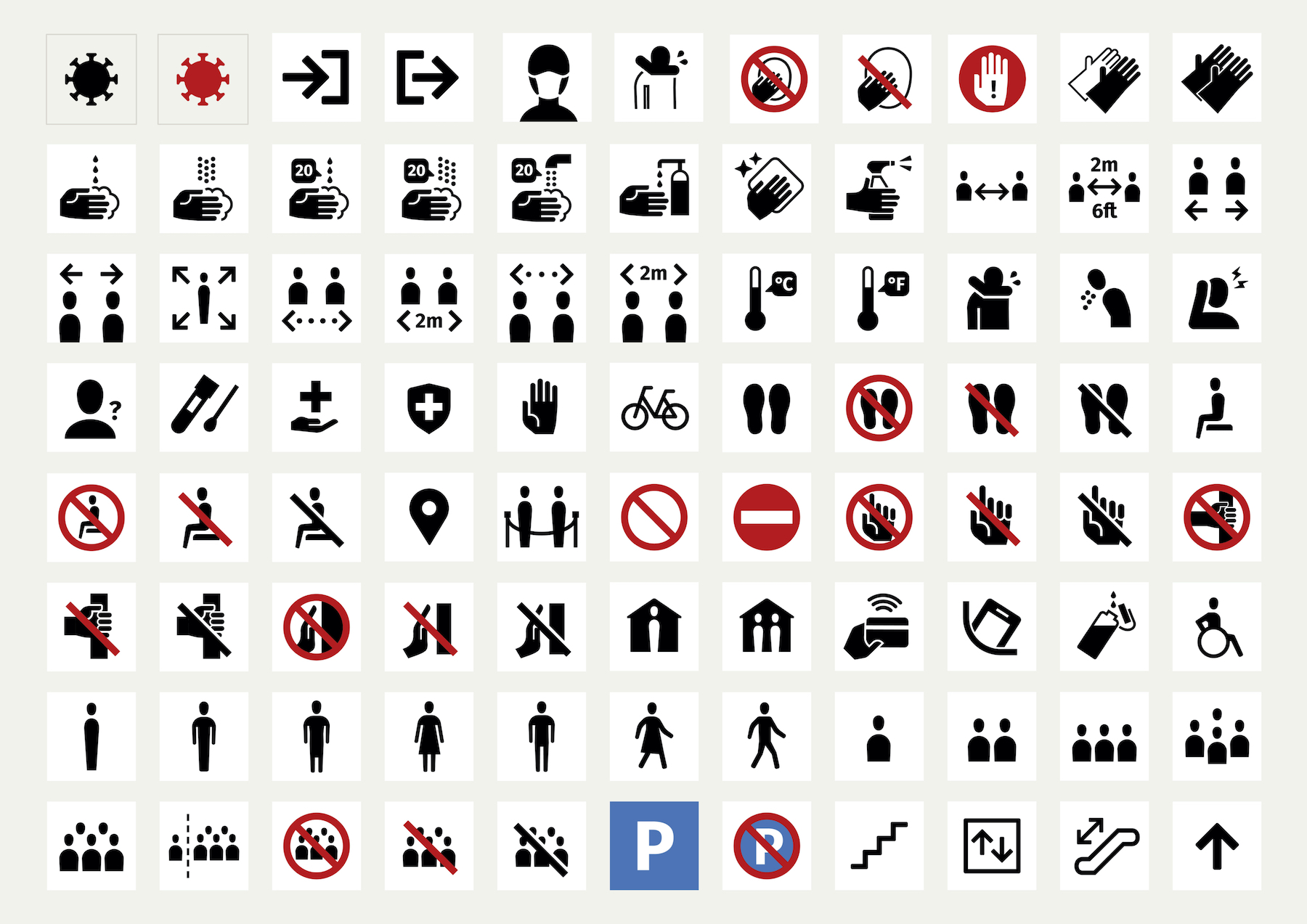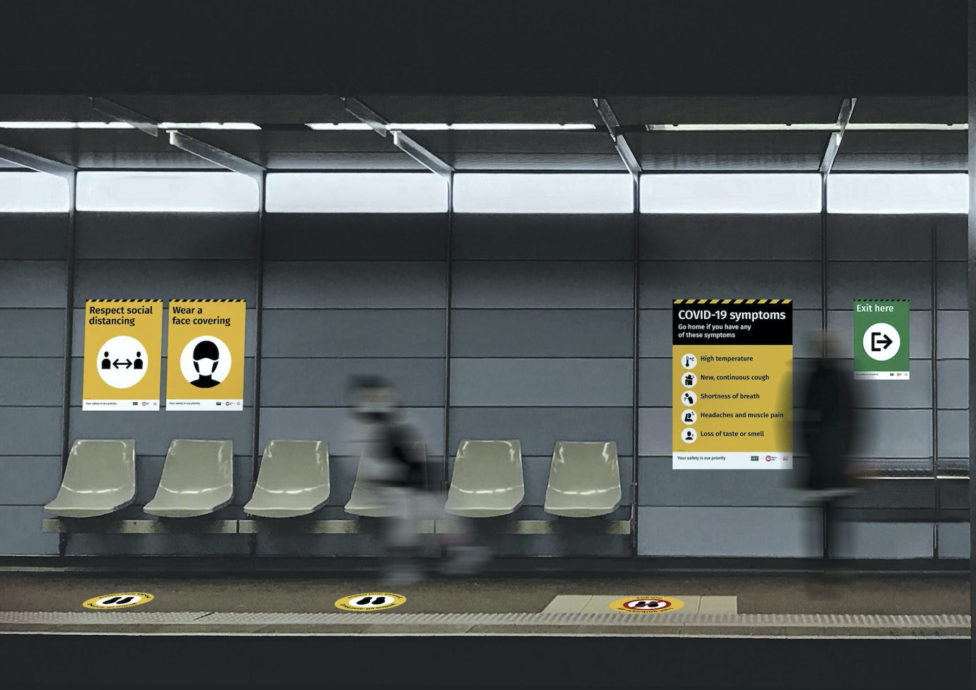When navigating public spaces during Covid-19, abiding by social distancing standards and other safety guidelines can get confusing. Public messaging around safe behavior can change depending on one’s location—it seems that almost every individual business and entity has tried to develop their own system to communicate these new standards, with mixed results. The lack of consistency in messaging and overwhelming amounts of differing information can make it difficult to follow, thus deterring long-term behavioral change toward preventing the spread of Covid-19.
That’s why Applied, a team of international wayfinding experts, has published the Covid-19 Design Toolkit, a comprehensive set of guidelines, icons, and templates for how to design systems in high-traffic places to encourage safer public behavior in response to the pandemic. After spending the past four months advising clients on how to introduce social distancing guidance into complex environments like transit stations and university campuses, Applied developed the Covid-19 Design Toolkit with a wide variety of industries in mind. It’s aimed at creating a universal design language that can be tailored to different locations, from entire cities to individual retail stores and offices.
“Through our work in dealing with the Covid-19 crisis, we’ve spotted a great degree of public confusion with knowing what to do when walking around a city or into a store, where to queue at or at what point to wear a face mask,” says Applied founder and creative director Tim Fendley. “This guide lets organizations collaborate and ultimately make environments safer and easier to use without the confusion.” The toolkit, which sets out a clear roadmap for implementation, is available royalty-free to any public or private landowner, place manager, or policy leader, and is free for anyone to download.






